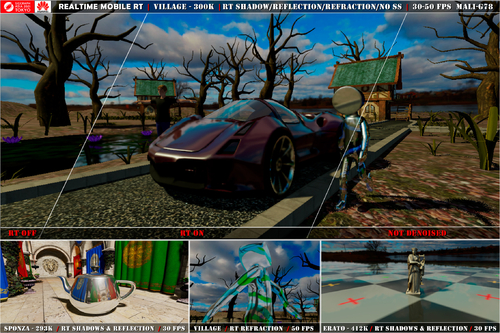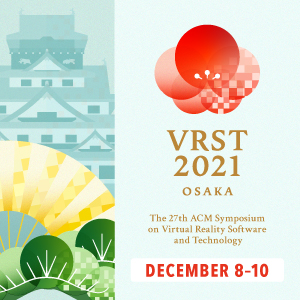Huawei real-time mobile ray tracing for flagship phones and games
-
 Full Access
Full Access
-
 Onsite Student Access
Onsite Student Access
-
 Onsite Experience
Onsite Experience
-
 Virtual Full Access
Virtual Full Access
-
 Virtual Basic Access
Virtual Basic Access
All presentations are available in the virtual platform on-demand.
Talk Description: Real-time raytracing solutions are gradually becoming more and more adopted in modern desktop games and applications both with the help of hardware acceleration and carefully tailored sampling techniques. With mobile platforms, efficient ray-tracing has been a long standing goal as well for some time now, and just recently a rather successive solutions started to appear. Considering the mobile constraints, the research has usually been focused not only on efficient algorithms and hardware acceleration, but also on optimizations in terms of efficient rendering pipelines and memory usage that aim to fully utilize the mobile GPU architecture. In this talk we'd like to discuss the technology behind our ray-tracing solution for existing mobile platforms, focusing on low-level optimizations and the essential parts of the framework that allow to achieve real-time framerates on scenes typical for mobile gaming and other use-cases. The framework supports various effects, such as soft shadows, glossy reflection, simplified refraction, dynamic geometry, among other things. We'll walk through the general pipeline, the denoiser stack and acceleration structures, discuss the data compression options and hardware specific optimizations.We will also talk about hybrid approaches and how other key elements of rasterization can be crucial for performance, from making compact G-buffer, implementing PBS, to applying high-quality antialiasing/upscaling techniques. Another important aspect – is the environment. The development of high-performance multi-platform applications is impossible without the use of specialized performance analysis tools, collecting all possible GPU metrics and helping to debug graphical applications. We will discuss the tools we are developing specifically for such use cases and demonstrate their capabilities. After that, we’ll provide the quality comparison and the data on power consumption across several platforms of different vendors. Finally we will discuss the current state of the applicability and the 'near future' plans for technology, both in terms of support for more complex RT effects/new features and the user-friendly API in the form of SDK/Extensions.
Speaker(s):
Yury Kryachko, Huawei CBG/OS LAB 3D team, Russia
Leonid Fedorov, Huawei CBG/OS LAB 3D team, Russia
Denis Pavlov, Huawei CBG/OS LAB 3D team, Russia





